Bulgaria Flag Meaning
Three horizontal stripes of white, green, and red representing peace and freedom, the agricultural wealth of the nation, and the courage and blood of Bulgarian patriots who fought for independence.
- Continent
- Europe
- Adopted
- 1991
- Ratio
- 3:5
- Colors
- white, green, red
- Designer
- Unknown (based on 1878 design)
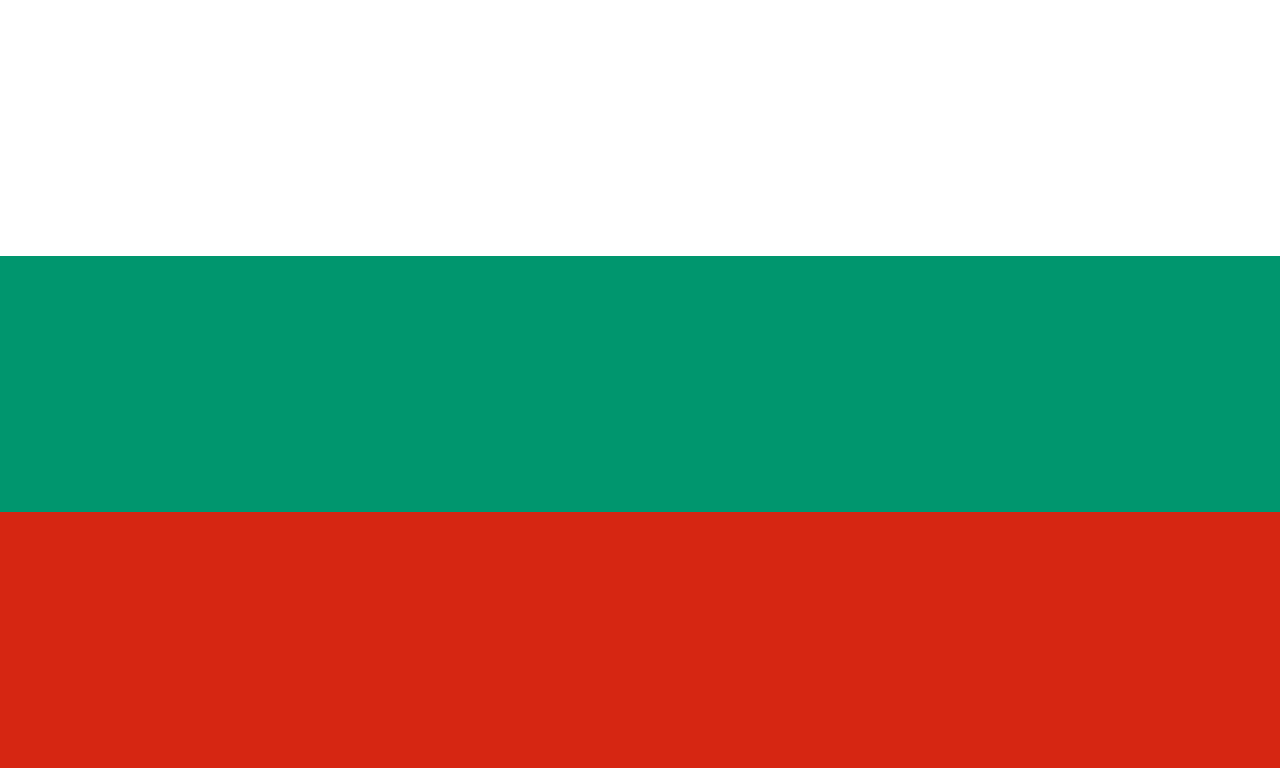
Symbolism
White Stripe: Represents peace, freedom, and the love of peace characteristic of the Bulgarian people, symbolizing the nation's aspiration for harmony and the white-capped peaks of the Bulgarian mountains.
Green Stripe: Represents the agricultural wealth and fertility of Bulgarian lands, symbolizing the green valleys, forests, and fields that sustain the nation and represent hope for prosperity and growth.
Red Stripe: Represents the courage and blood shed by Bulgarian patriots in their struggle for independence and freedom, symbolizing the bravery and sacrifice of those who fought against Ottoman rule.
History
- 681-1018: The First Bulgarian Empire was established by Khan Asparuh, becoming one of the most powerful states in medieval Europe and adopting Christianity under Boris I in 864.
- 1185-1396: The Second Bulgarian Empire restored Bulgarian independence under the Asen dynasty, with Tarnovo as its capital, until falling to Ottoman conquest in the late 14th century.
- 1396-1878: Ottoman rule lasted nearly five centuries, during which Bulgarian culture and Orthodox Christianity survived despite attempts at assimilation, with periodic uprisings against Turkish dominance.
- 1876: The April Uprising against Ottoman rule was brutally suppressed, but international outrage over the massacres helped galvanize European support for Bulgarian independence.
- March 3, 1878: The Treaty of San Stefano created an autonomous Bulgarian principality following the Russo-Turkish War, and the white-green-red tricolor was adopted as the national flag.
- 1908: Bulgaria declared full independence from the Ottoman Empire under Tsar Ferdinand I, becoming the Kingdom of Bulgaria and maintaining the tricolor flag design.
- 1941-1944: Bulgaria allied with Nazi Germany during World War II but notably refused to deport its Jewish population, saving nearly 50,000 Bulgarian Jews from the Holocaust.
- 1946-1989: The People's Republic of Bulgaria was established under communist rule, with the flag featuring the national coat of arms during most of the communist period.
- November 10, 1989: The communist regime fell following peaceful demonstrations, beginning Bulgaria's transition to democracy and market economy as part of the broader collapse of communism in Eastern Europe.
- July 13, 1991: A new constitution was adopted and the plain tricolor flag without communist symbols was officially readopted, symbolizing the restored democracy and European aspirations.
- 2004-2007: Bulgaria joined NATO in 2004 and the European Union in 2007, marking its full integration into Western institutions and completing its post-communist transition.
Trivia
- Bulgaria is the oldest country in Europe that has never changed its name since its establishment in 681 AD.
- The Cyrillic alphabet was developed in Bulgaria by disciples of Saints Cyril and Methodius and is now used by over 250 million people worldwide.
- Bulgaria is the world's largest producer of rose oil, with the Valley of Roses near Kazanlak producing the majority of global supply.
- The flag represents a country that saved its entire Jewish population during World War II, one of the few European countries to do so.
- Bulgaria has the fastest internet speeds in the world according to some rankings, due to extensive fiber optic infrastructure development.
- The country is famous for its yogurt culture, with Lactobacillus bulgaricus being named after Bulgaria and contributing to longevity in Bulgarian populations.
- Rila Monastery, founded in the 10th century, is Bulgaria's most important cultural monument and a UNESCO World Heritage site.
- Bulgaria uses the Cyrillic script and is the only EU member state to do so, though Latin script is increasingly common in urban areas.
- The flag flies over a country with some of Europe's best-preserved medieval towns, including Veliko Tarnovo and Plovdiv, one of Europe's oldest continuously inhabited cities.
- Bulgarian is the only Slavic language that has lost most of its case system, making it grammatically unique among Slavic languages.
- The country has a rich tradition of choral music, with the Bulgarian Women's Choir 'Le Mystère des Voix Bulgares' winning international acclaim.
- Bulgaria is home to the Thracian civilization, which left behind remarkable archaeological treasures including elaborate gold artifacts.
- The flag represents a country where nodding means 'no' and shaking the head means 'yes,' opposite to most world cultures.
- Bulgaria has significant geothermal resources and a long tradition of spa tourism dating back to Roman times.
- Despite EU membership, Bulgaria uses the Bulgarian lev as its currency and has not yet adopted the euro, though this remains a goal.
Related Countries
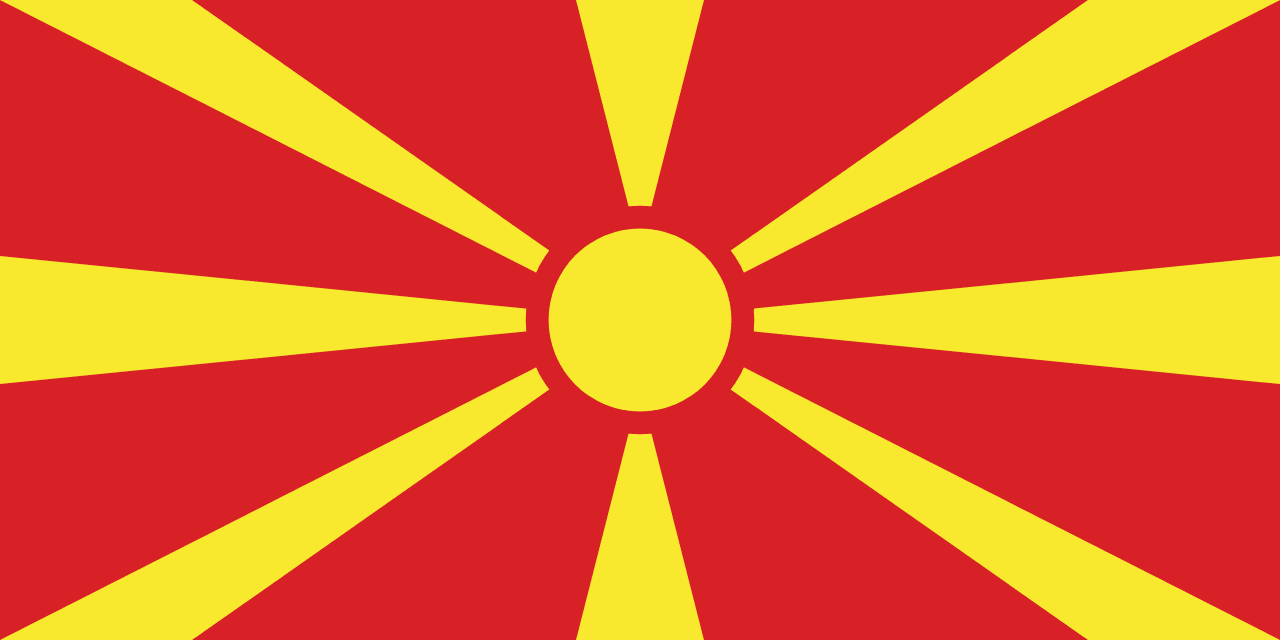
North Macedonia
Europe
A red field with a golden-yellow stylized sun with eight broad rays extending to the edges. Known as the 'Sun of Liberty,' it symbolizes freedom and the new nation’s identity.

Romania
Europe
A vertical tricolor of blue, yellow, and red, representing the unity of Romania’s historical regions. The design dates to the 19th century and was restored after the fall of communism in 1989.
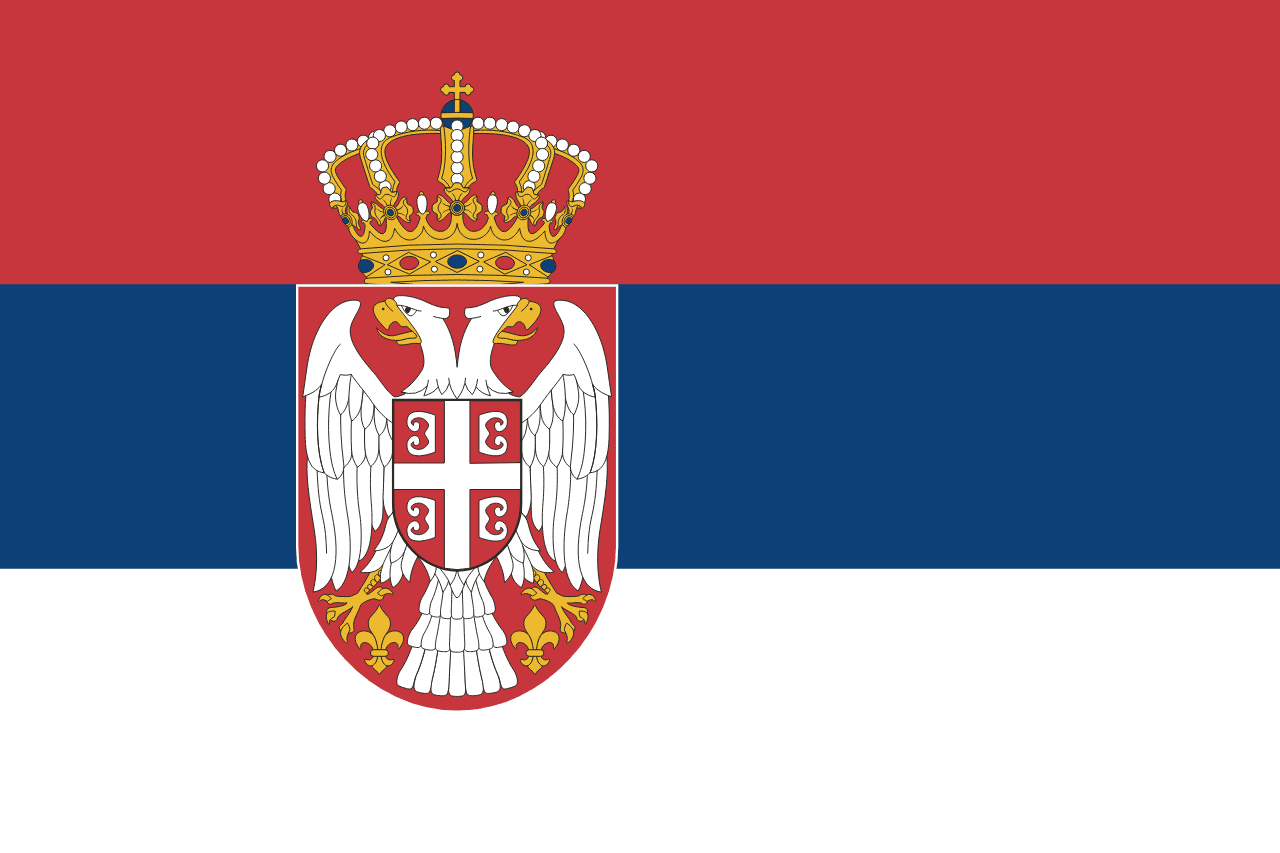
Serbia
Europe
A horizontal tricolor of red, blue, and white with the national coat of arms offset toward the hoist. The coat of arms features a double-headed white eagle, the Serbian cross, and a royal crown.
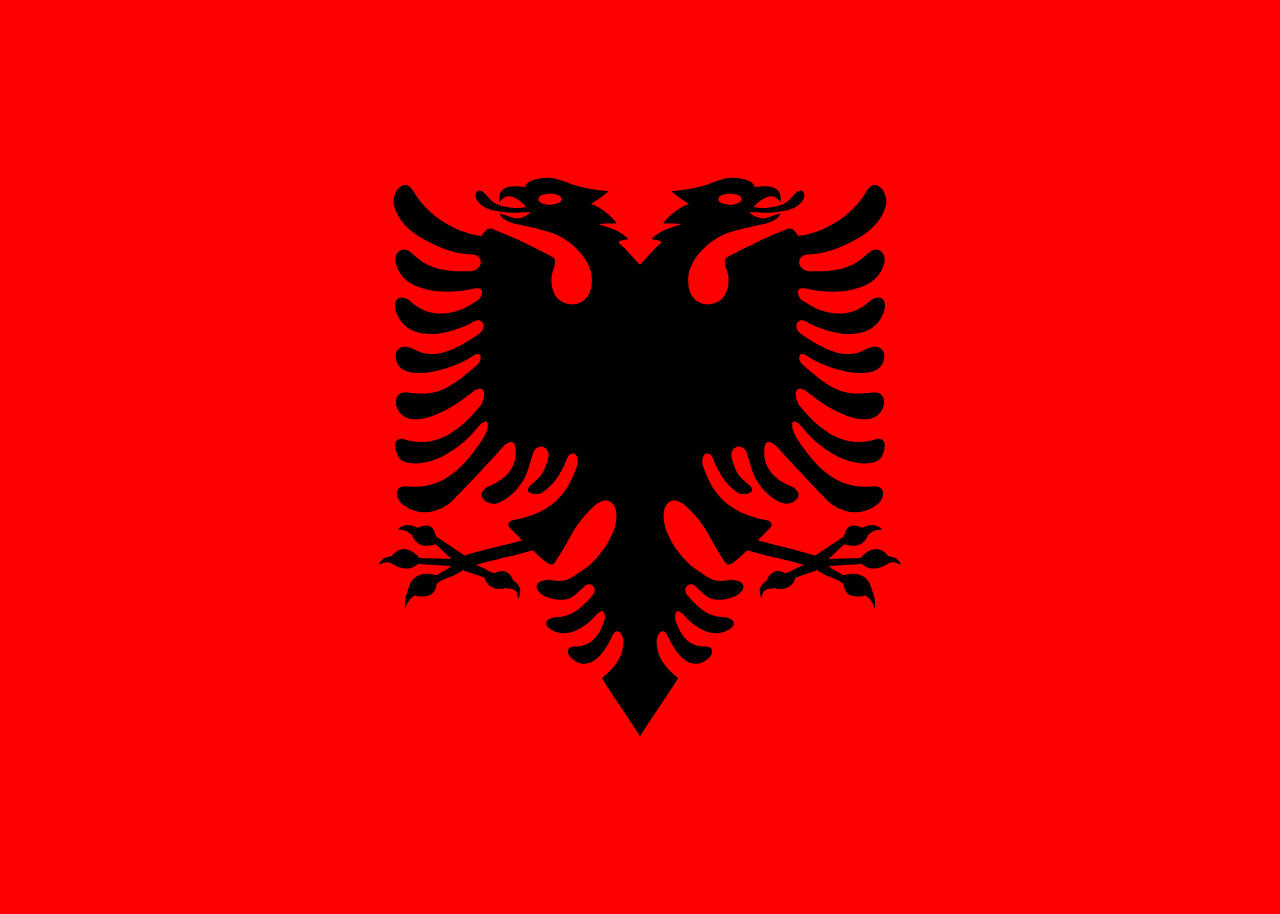
Albania
Europe
A red field with a black two-headed eagle, one of Europe's oldest heraldic symbols representing Albanian independence, strength, and the legacy of medieval hero Skanderbeg.
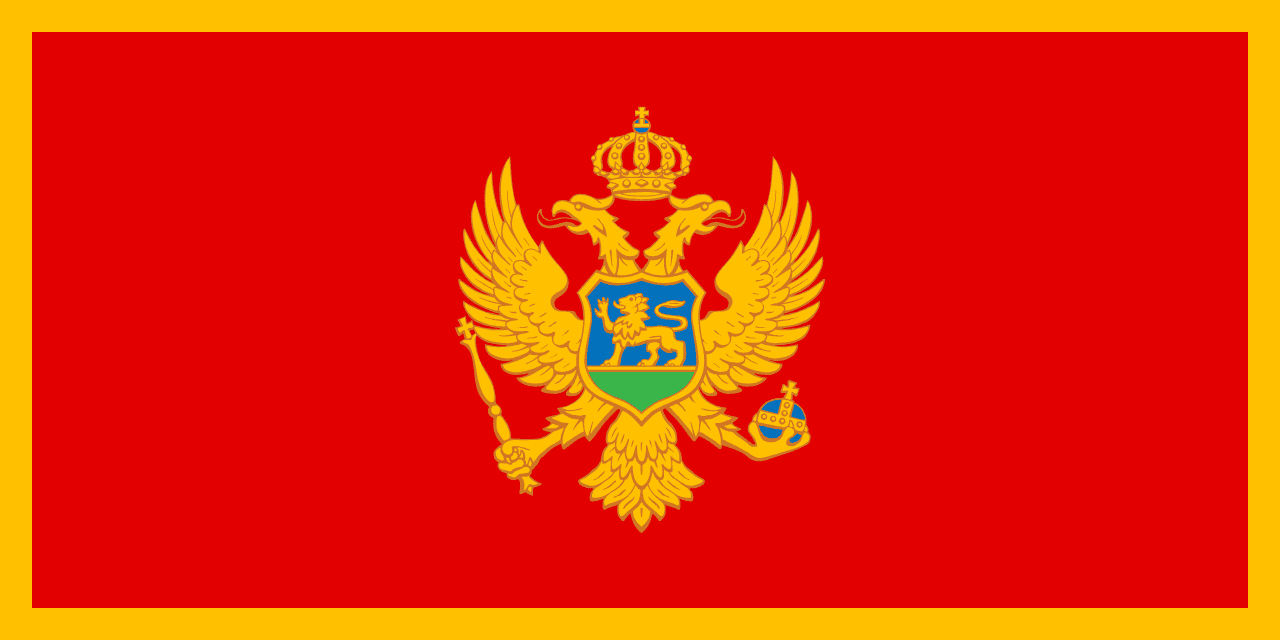
Montenegro
Europe
A red field with golden border and the coat of arms featuring a golden double-headed eagle, representing Montenegro's medieval heritage, Orthodox Christian identity, and recent independence from Serbia.

Greece
Europe
Nine horizontal stripes alternating blue and white with a blue canton containing a white Greek cross, representing the sea and sky, purity and struggle for independence, and the Greek Orthodox faith that unites the nation.